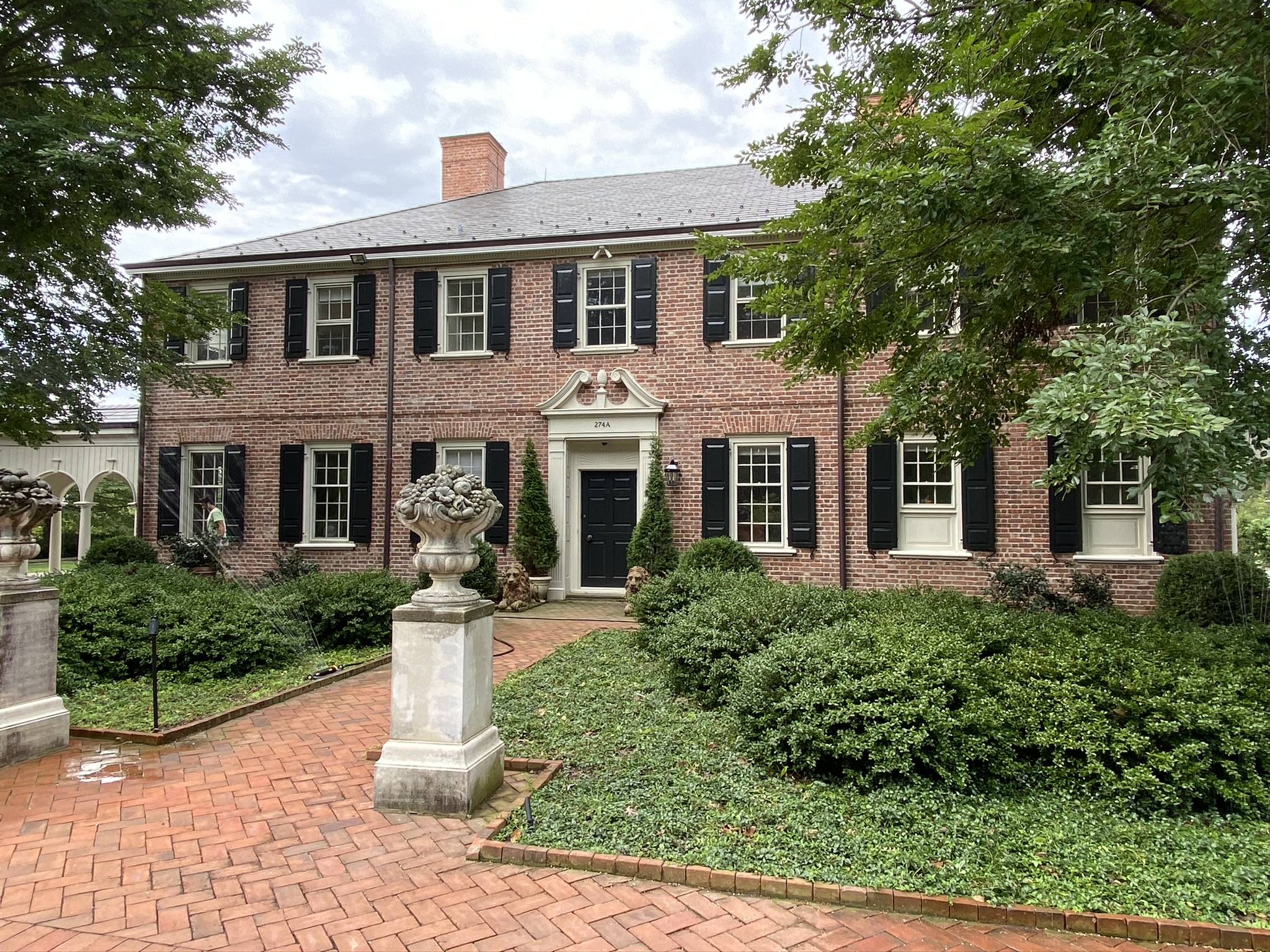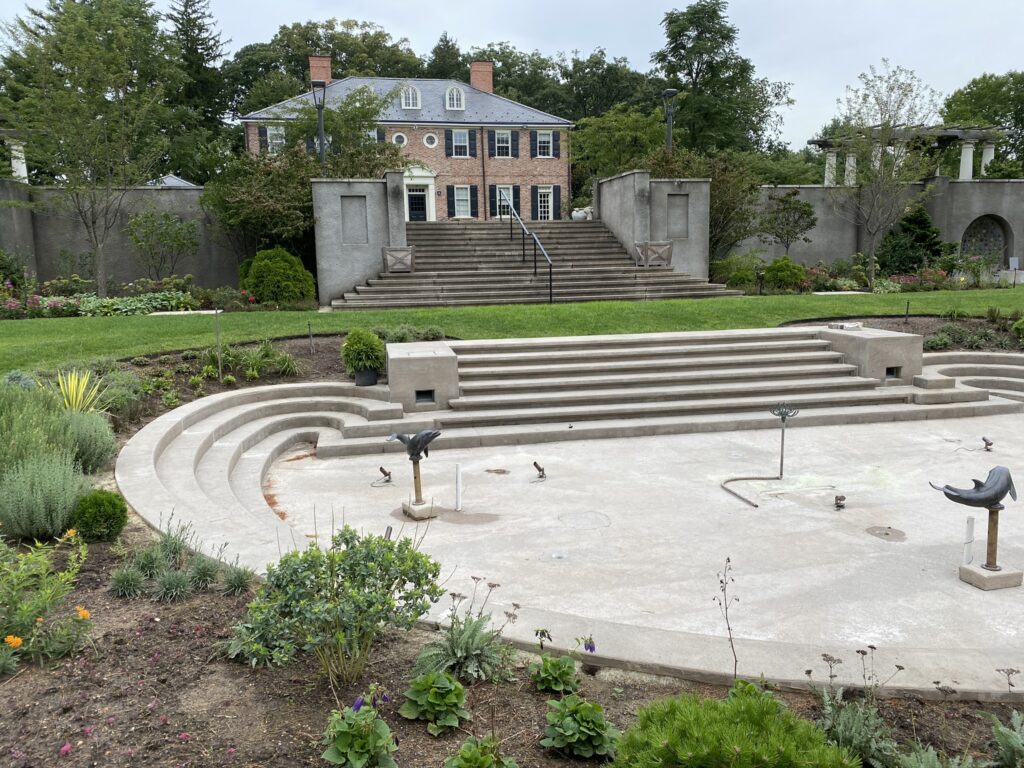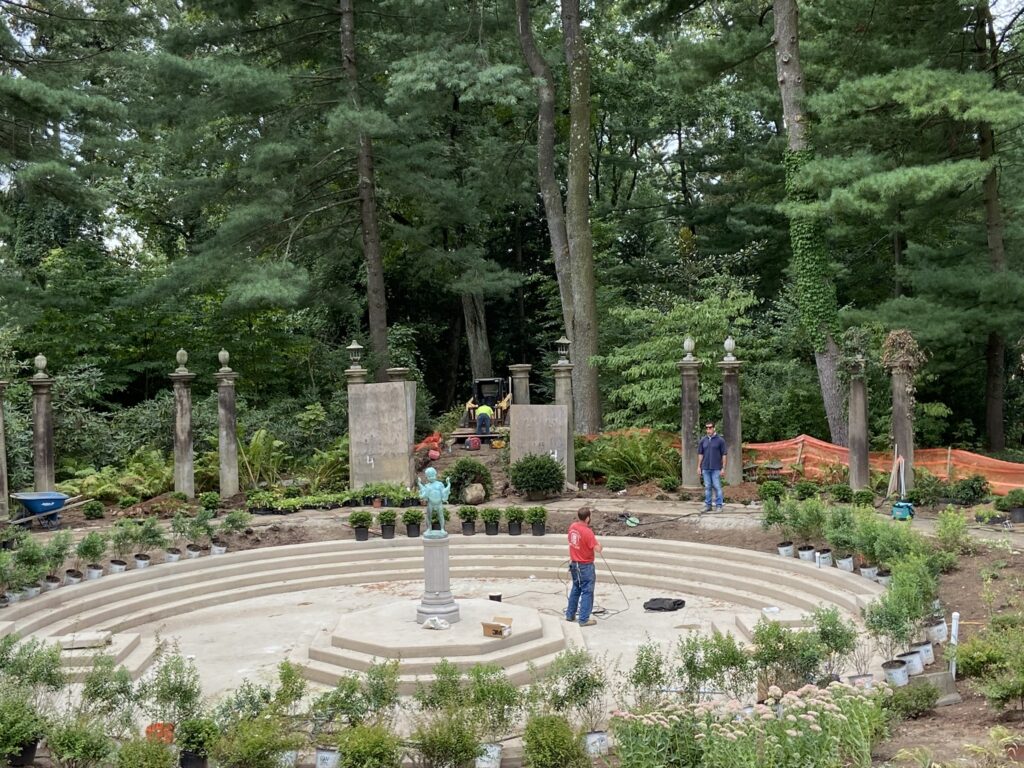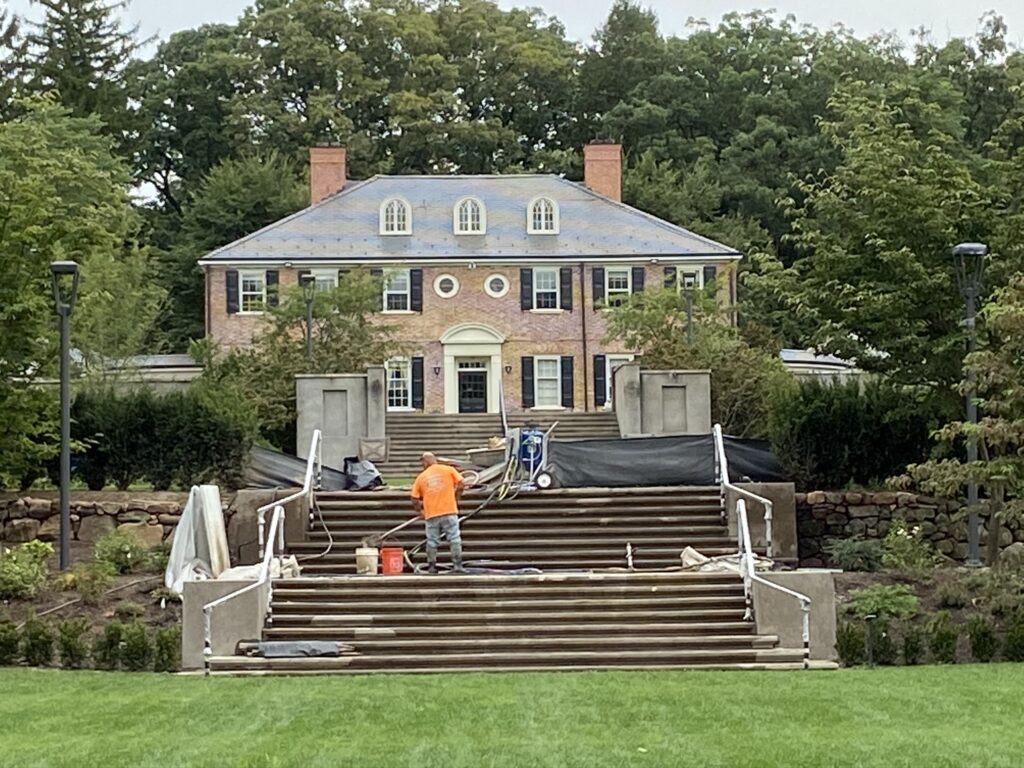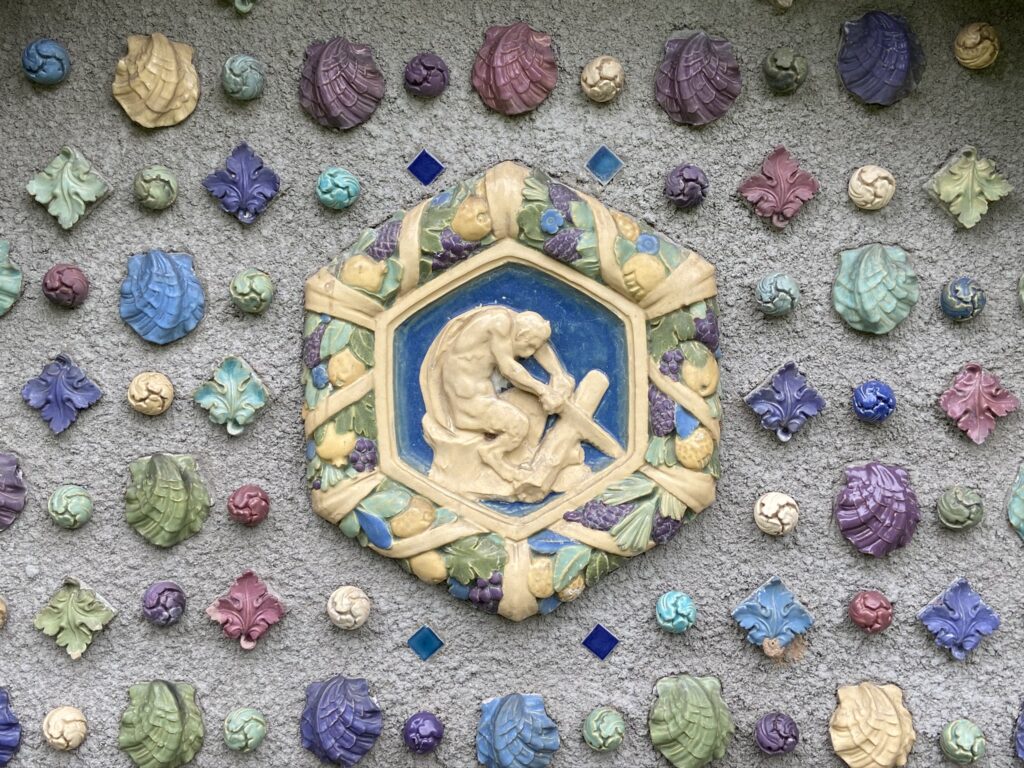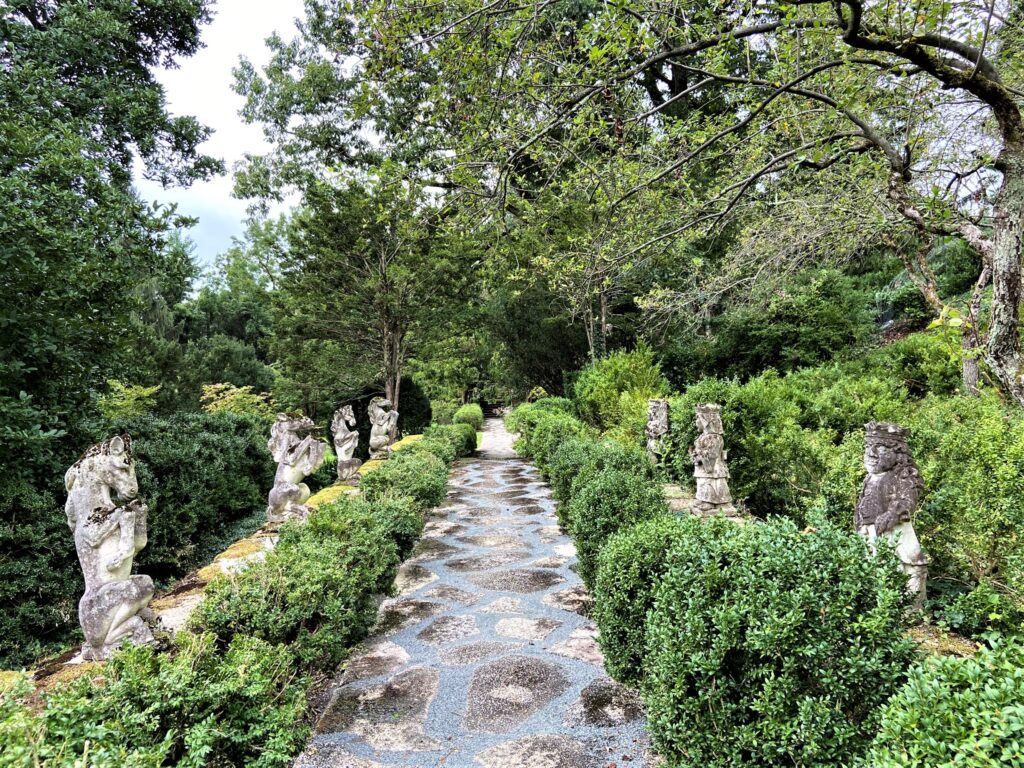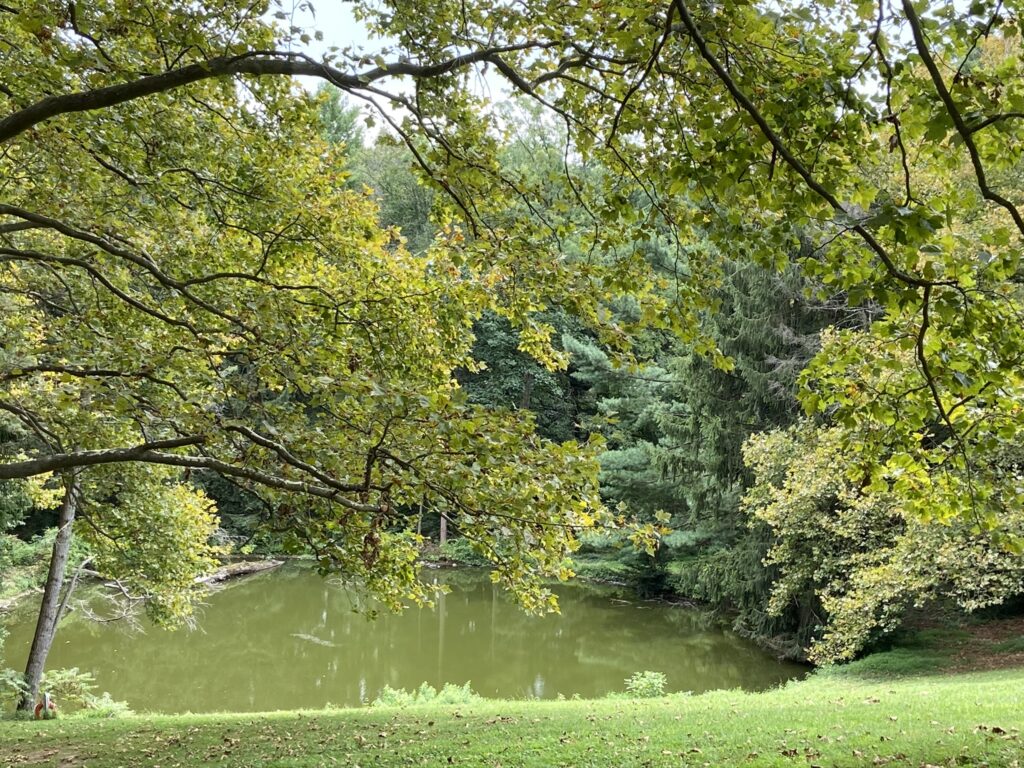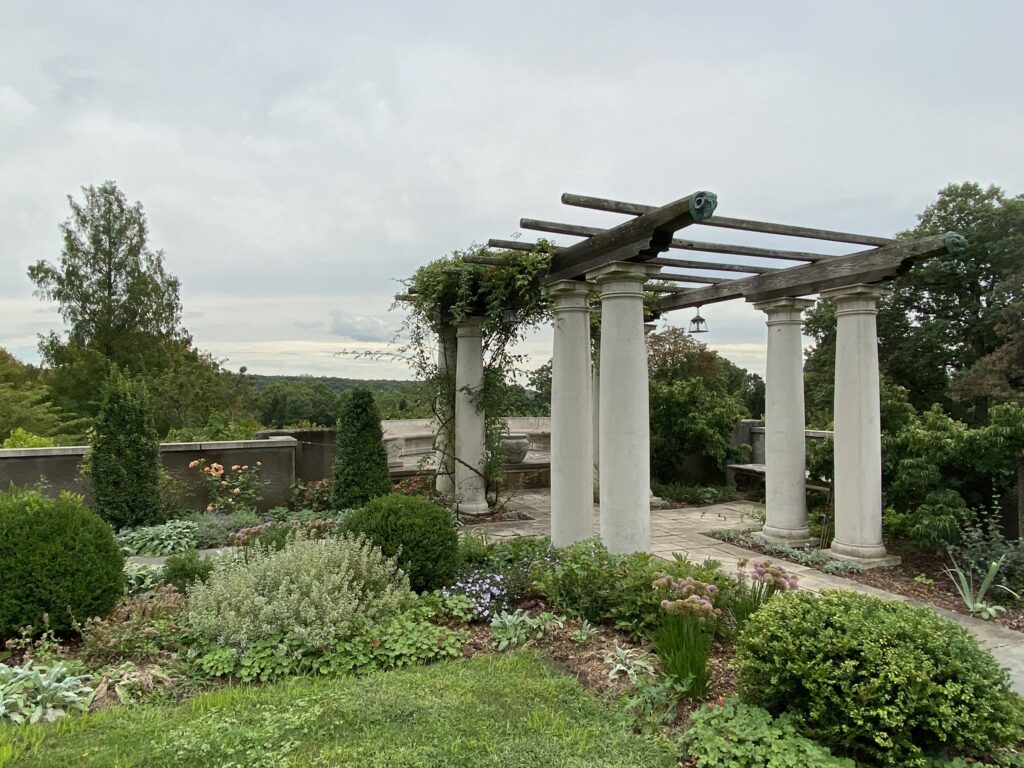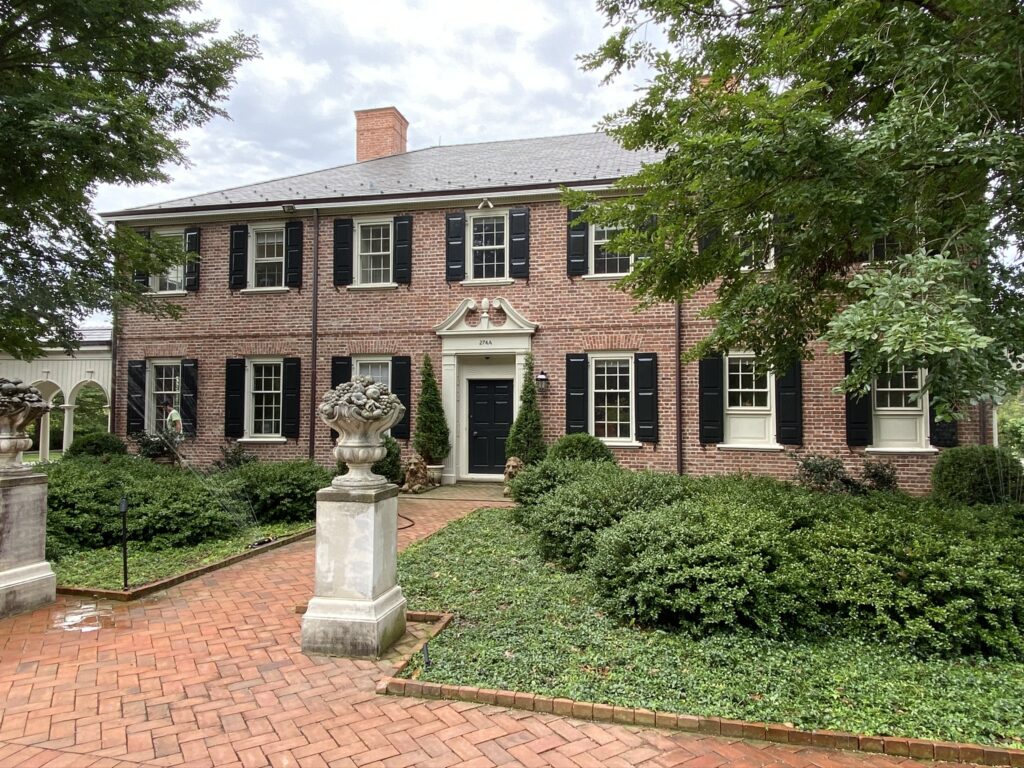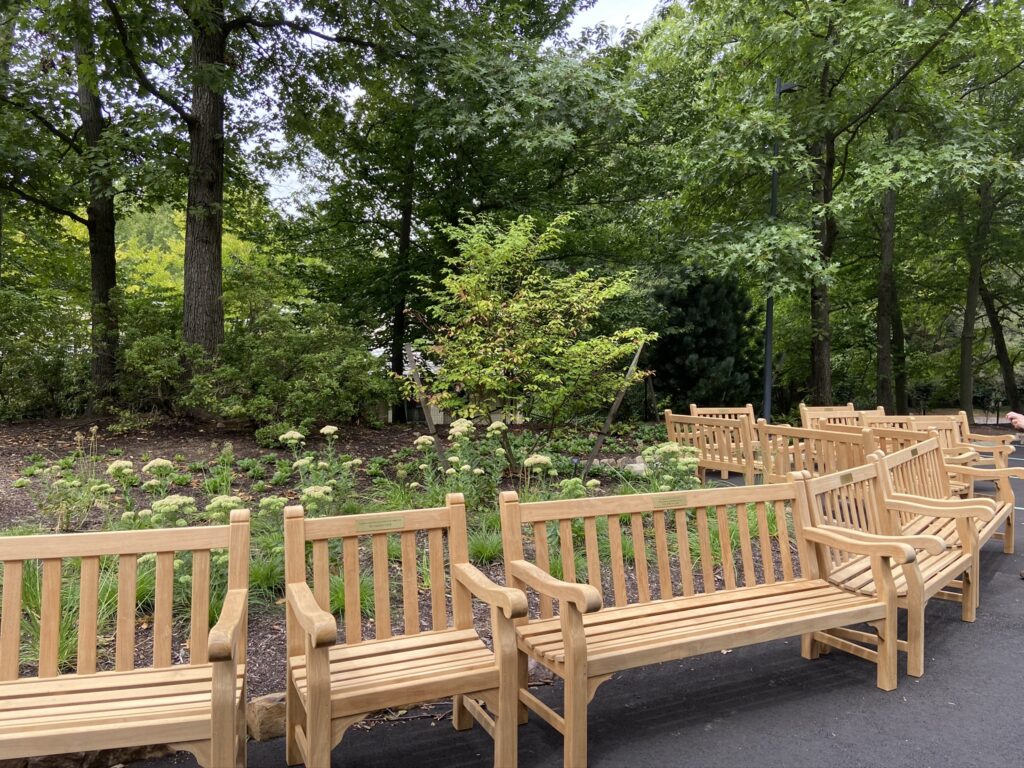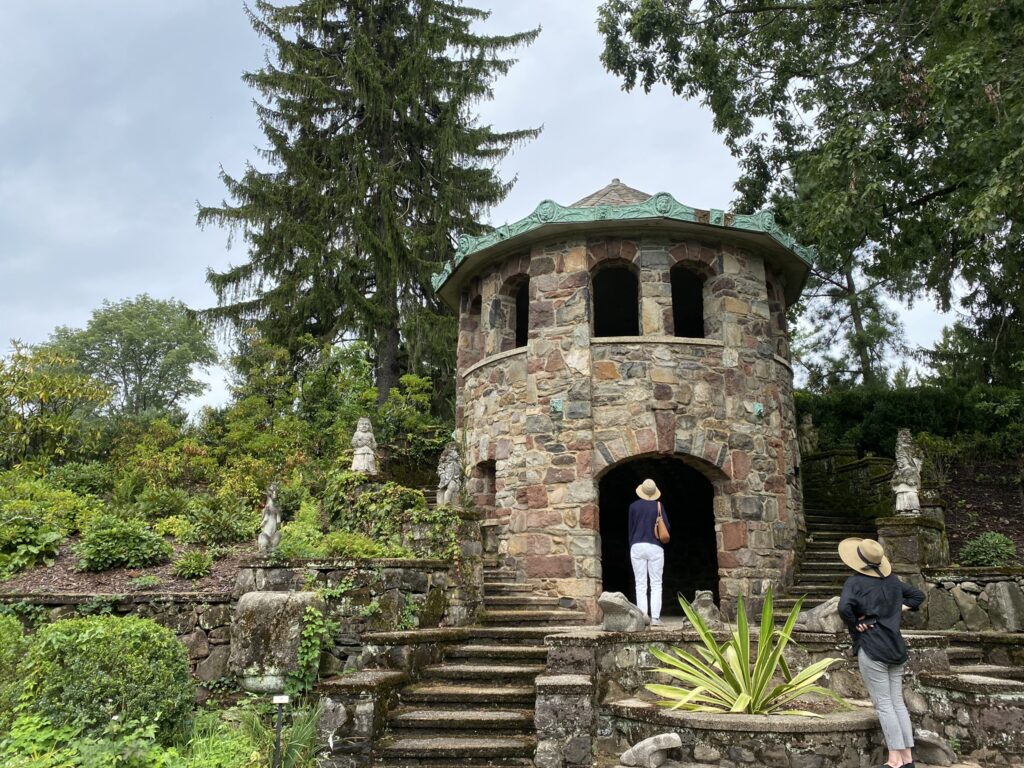In September, historic Greenwood Gardens in Short Hills, New Jersey, is reopening after a planned, yearlong closure to enhance and revitalize this serene, 28-acre public garden surrounded by hills and parkland. Major renovations include the rebuilding of beautiful fountains and staircases that extend behind the Georgian Revival house (used for the garden’s classrooms and offices). The garden also has extensive new landscaping, a new ticket booth, and a new parking lot. All will help visitors appreciate the unique setting of this family garden dating to the early 20th century. Equally important these days, a visit to Greenwood, less than an hour from New York City, offers the opportunity to deepen a connection with nature and refresh the spirit.
The Garden’s Evolution: Three Families
Greenwood was home to several families who shaped the garden. In 1906, Joseph P. Day, a hugely successful real-estate auctioneer, and his wife, Pauline Pope, bought a 79-acre country estate in what is now the affluent New York City suburb of Short Hills. The mansions the Days built have not survived, but the family’s garden legacy has endured. Built as a private pleasure garden, it has formal elements such as terraces but also rustic ones. Some features reflect the Arts and Crafts movement’s desire to escape industrialization by appreciating nature and handmade objects. Most notably, the gardens take advantage of a sloping site with views of the adjacent, 2,100-acre South Mountain Reservation. This seclusion is rare in this now-densely populated region.
Although many of the era’s labor-intensive gardens have not survived, Greenwood was more fortunate. Lawyer and gentleman farmer Peter P. Blanchard Jr. and his wife, Adelaide Childs Frick, purchased the property, then in decline, in 1949. They built a brick Georgian Revival–style house in 1950 on the site of the Days’ crumbling villa and renamed it The Greenwoods. Blanchard planted allées of trees and added two ponds and other natural features while maintaining many Day-era garden elements.
After Peter P. Blanchard Jr.’s death in 2000, his son, naturalist and conservationist Peter P. Blanchard III, and daughter-in-law, Sofia, began planning the long-term preservation of Greenwood. They set up the nonprofit Greenwood Gardens and collaborated with the Garden Conservancy to conserve the garden and make it accessible to the public. In 2013, the garden opened to the public, although more restoration was needed. Today, an ongoing seven-year strategic plan, which includes the work completed this fall, will help the garden flourish into the future.
Greenwood Gardens Today
Some key garden highlights are listed below, but also take time to wander the wooded paths—and enjoy the trees and tranquility while sitting on the new benches around the property.
The House and Main Lawn/Upper Terrace: The Main Lawn behind the handsome brick house has pergolas, colorful plantings, and most important, stunning views of towering trees and the garden’s sloping Main Axis: the Reflecting Pool Terrace, the Croquet Lawn, and, in the distance, the romantic Garden of the Gods.
Reflecting Pool Terrace and D-Shaped Pool: Newly restored but dating to the 1920s, the elegant D-shaped pool, with three frolicking lead dolphins (from the Blanchard era) spouting water, demonstrates charmingly how water features enhance a garden. Also here, in the terrace’s retaining wall, are grottoes with colorful Arts and Crafts–styled glazed tiles from Cincinnati’s famous Rookwood Pottery.
Croquet Terrace and the Garden of the Gods: Below the D-shaped pool, the expansive lawn of the Croquet Terrace was used in the Day era for that activity. Continuing past this, visitors enter the Garden of the Gods, a wooded area with a newly renovated circular pool that holds an adorable statue, Boy with Waterfowl. Restored wooden trellises and columns with ornaments surround the pool.
The Summerhouse and Teahouse: Two whimsical Arts and Crafts–style structures in wooded areas on the garden’s eastern side capture the spirit of the 1920s. Nestled among four century-old horse chestnut trees, the Summerhouse is an intimate stone pavilion with a cone-shaped roof. The original Fulper tiles from Flemington, New Jersey, decorate the floor. Down a sculpture-lined path is the two-story Teahouse. On the lower level, the arched ceiling contains Rookwood tile; the floor is Fulper tile. From the upper level, the views take in the ponds and hills.
Ponds and the Farm Allée: Two ponds created by Peter P. Blanchard Jr. in 1965 on the eastern side of the garden enhance the view and also attract waterfowl. The allée of trees here is perfect for strolling and is near some buildings from the Blanchard-era farm area. The hives on the grounds are a collaboration with Overlook Hospital in nearby Summit; the hospital uses the honey in its kitchen. The hospital also gets eggs from the chickens here.
Looking Forward
Its latest renovations and plans for the future show how far Greenwood has come since it opened in 2013. With about 6,000–7,000 visitors annually, mostly from the 20-mile area surrounding the garden, it has room for growth as the community resource that the Blanchards envisioned. The horticultural team continues to add more flowering plants, with labels, to the grounds, and future projects will include work on areas including the seven-tier Cascade fountain. A dedicated group of 60–65 volunteers provides essential support as docents and horticultural assistants. Some volunteers, the Green Team, won a New Jersey state award in 2018 for public service.
Due to Covid-19, Greenwood’s public programming for adults and children has gone online, but it has included everything from sessions on practical gardening topics to lessons in botanical drawing. All are designed to help people get closer to the natural world, something that is easy to do in this special place.
Visiting Greenwood
Greenwood will be open Friday–Sunday from September 13 to November 8 in 2020; the normal season is spring through fall. Due to Covid-19, admission is by advanced purchase of a timed ticket. Visitors tour the garden on their own, with a brochure. Check the website for ticket information, admission fee, and garden policies.
Bio
Linda Cabasin is a travel editor and writer who covered the globe at Fodor’s before taking up the freelance life. She’s a contributing editor at Fathom. Follow her on Instagram and Twitter at @lcabasin.

